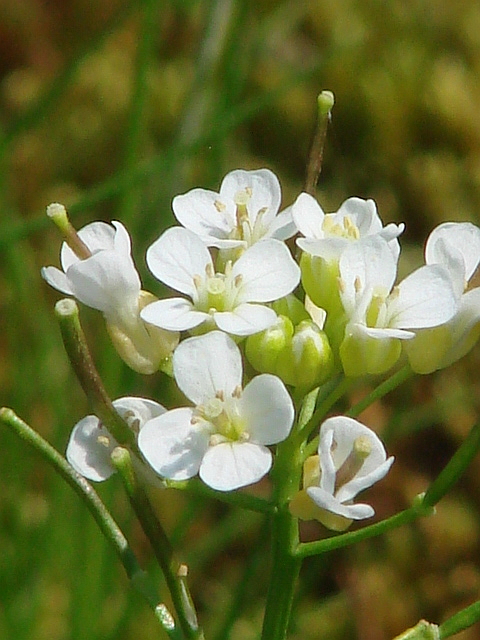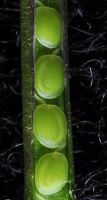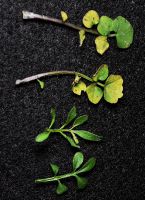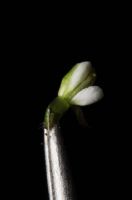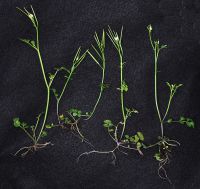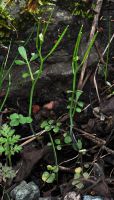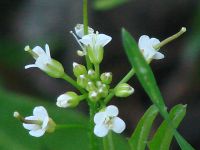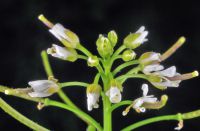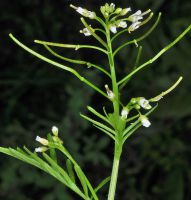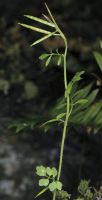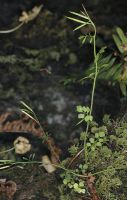Distribution: Occurring on both sides of the Cascades crest in Washington, but more common west of the crest; Alaska to California, east to the Rocky Mountains.
Habitat: Widespread, but mostly in seasonally wet, open or forested areas.
Flowers: March-July
Origin: Native
Growth Duration: Annual, Biennial
Conservation Status: Not of concern
Pollination: Bees, flies
Annual or biennial herb from a taproot, the 1-several stems 1-4 dm. tall, usually freely-branched, sub-glabrous or with short, stiff hairs.
Leaves alternate, numerous, basal and cauline, pinnate, the lateral leaflets 4-10, obovate to ovate or sub-orbicular, 3-20 mm. long, entire or with a few rounded teeth or lobes, the terminal leaflet considerably larger; all pubescent as the stem.
Inflorescence of several-flowered racemes, usually bractless, but sometimes the lower flowers bracteate; pedicles 5-15 mm. long, ascending-erect; sepals 4, 1-2 mm. long, the outer pair saccate at the base; petals 4, white, 2-4 mm. long; stamens 6; style under 0.5 mm. long.
Siliques linear, erect, 1.5-2.5 cm. long and 1.2-1.5 mm. broad; seeds 15-22, in 1 series.
Publication: Fl. N. Amer. 1: 85. 1838.
PNW Herbaria: Specimen records of Cardamine oligosperma in the Consortium of Pacific Northwest Herbaria database.
WA Flora Checklist: Cardamine oligosperma checklist entry.
OregonFlora: Cardamine oligosperma information.
E-Flora BC: Cardamine oligosperma atlas page.
CalPhotos: Cardamine oligosperma photos.
USDA Plants: Cardamine oligosperma information.

